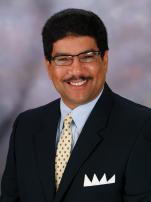
Business needs two main items to grow and prosper in a community: customers and workforce. Let us assume for the sake of this discussion that a business can have an endless supply of customers. After all, customers are there for the earning.
That leaves the second item for consideration, workforce. Site selectors look to locate and stay in communities that understand local trends in their workforce. Of course, that is if the community has the type of workforce for which interested businesses have a demand.
Acquiring Community Workforce Knowledge
How can community leaders know what their local firms need in future workers? Ask. Asking employers can lead to knowing what the positive side of the local workforce is. Asking can also expose the issues associated with the weaker side of the workforce. A well-designed series of questions in a survey of a community’s larger employers will uncover a wealth of information regarding the workforce in the area.
When a community understands the strengths and weaknesses of its workforce, it can then install measures to take advantage of both, to the benefit of the workforce and the business community.
The other element in understanding the community’s workforce involves asking the workforce itself about the level of training and skills it possesses. Community and business leaders may be surprised to learn what skills are housed in a community that are not being utilized. A gem could be lying just beneath the surface.
Knowing what current skills exist in the workforce will aid existing business decision leaders in planning future activity. That type of knowledge aids economic development leaders in the conversation to support potential expansion work with a company and at the same time helps to retain an executive’s investment if relocation is being contemplated. This is the exact same information a company that is considering making a new, first-time investment in a community will need to review. Without this data, in both scenarios site selection executives may make a decision that leads to investment dollars and the employment it creates going to another town.
Next Steps
Knowledge of what comprises the skills of the local workforce is not enough. It is actually just the beginning. How that knowledge is put to use is also important. Simply sharing it with the business community is just the first step. Projecting the future needs of the business community will help partners make needed adjustments to ensure a supply of quality workers is being developed or, in some cases, recruited to the community.
Bringing partners into the conversations regarding a community’s workforce is vital. The need to have the local school district, community college and the college or university at the table as willing and capable partners will make a difference in the outcome.
A prime example of this is the way two community colleges and two universities in Northwest Ohio have combined to address the training needs of the region’s employers. It is not just lip service; the presidents of the respective institutions meet regularly with CEOs of companies big and small to develop improvements to training programs.
One program that came from these conversations in Northwest Ohio regarding the pipeline of talent is an intern program that works to retain young, summer interns as full-time permanent employees. It’s working.
The retirement of the Baby Boom generation is in full swing. Thousands of highly experienced workers reach the traditional retirement age of 65 every day in America and the trend will continue for the next decade. Understanding how to replace that knowledge and work ethic is critical to a community’s ability to stay competitive when it comes to executive site selection decision-making.

